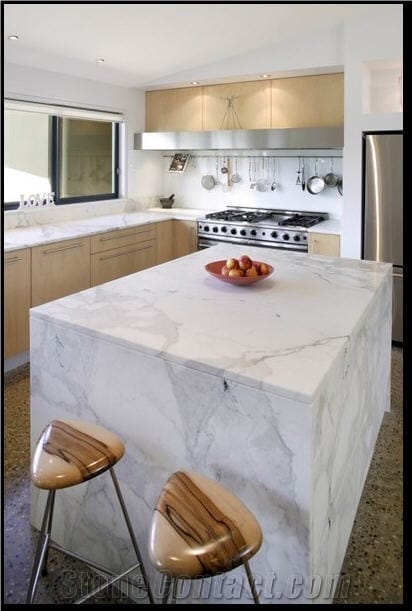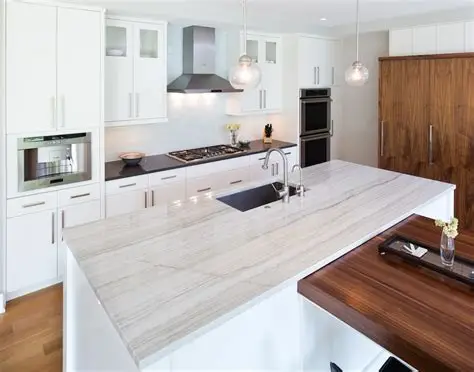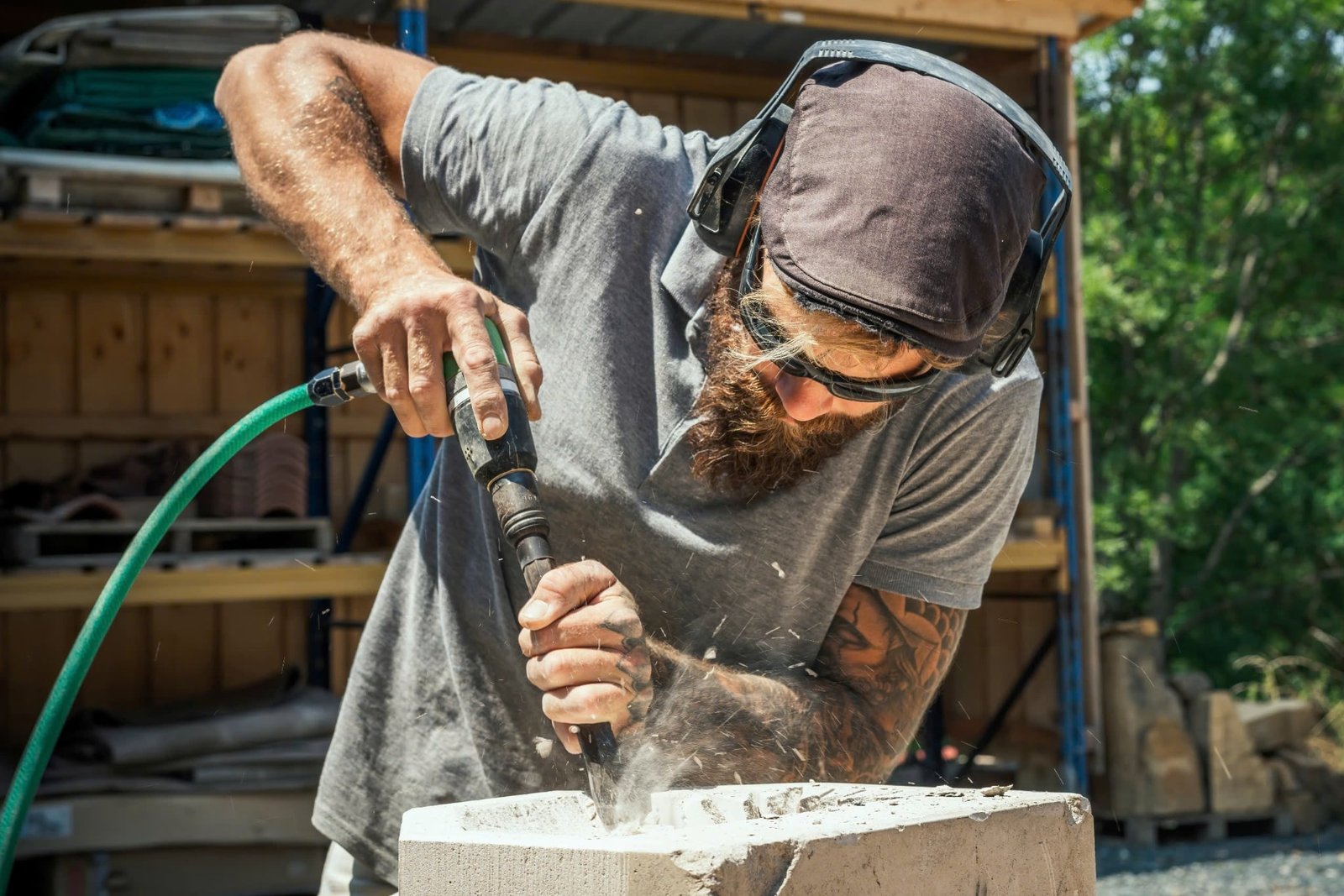
Leathered granite countertops offer a warm, tactile finish that is both elegant and resilient.
Leathered granite countertops offer a warm, tactile finish that is both elegant and resilient. This textured, matte aesthetic brings out natural beauty and character, making them a popular choice for granite kitchen countertops, granite bathroom countertops, and even granite countertops for outdoor kitchens. However, maintaining that distinctive leathered finish—especially when it begins to feel worn or uneven—requires a gentle yet thorough honing process.
In this detailed guide, we cover everything you need to know about how to hone leathered granite countertops, with easy-to-follow methods, essential materials, maintenance tips, and professional insights.

What Is Leathered Granite?
Before honing, it’s important to understand what makes leathered granite unique:
- Texture & Finish: Leathered granite has a soft, velvety feel with a matte sheen—no gloss.
- Durability & Practicality: It conceals scratches and fingerprints better than polished surfaces and is resistant to heat damage.
- Popular Colors: Especially striking in black granite countertops, earthy brown granite countertops, and unique blue pearl granite countertops.
This finishing technique maintains the natural roughness of granite slabs for countertops, enhancing depth and texture while still being easier to care for than honed or polished finishes.

Why & When You Should Hone Leathered Granite
Signs It’s Time for a Re-Hone:
- Texture feels patchy or shiny in spots
- Oil stains or residue becomes more visible
- Bedding oil or buildup has altered the surface
Benefits of Honing:
- Restores consistent matte texture and appearance
- Removes minor etches, surface imperfections, or buildup
- Prepares the stone for resealing and ongoing maintenance
Essential Tools & Materials for Honing
To achieve professional results, gather these items:
- Fine-grit abrasive pads (1,000–3,000 grit)
- Stone honing spray or alcohol-water mix
- Lint-free microfiber cloths
- Soft-bristle nylon brush
- Granite sealant
- Dust mask, gloves, and safety glasses
- (Optional): Variable-speed polisher with white polishing pad
Safety First: Hide heavy items and use proper lifting tools. Learn more about safe stone handling with this guide to gantry crane selection.
Step-by-Step: How to Hone Leathered Granite Countertops
1. Clean the Surface Thoroughly
Begin by removing all grease, dirt, and debris using a pH-neutral cleaner. Avoid harsh chemicals that can affect texture. Rinse, dry, and inspect the surface for shiny spots or stains.
2. Lightly Mist the Granite
Spray the countertop with a honing or isopropyl-alcohol-water blend. The damp surface helps the pad glide evenly while preventing debris from scratching.
3. Hone in Small Sections
Using fine-grit abrasive pads:
- Apply consistent, light pressure—start in one area.
- Move pads in circular or back-and-forth motions.
- Reapply mist as needed.
- Work with the texture direction of the stone.
4. Test & Evaluate
Wipe the area clean and assess texture uniformity. Continue honing as needed to restore balance.
5. Deep Clean Honed Surface
Use a soft-bristle brush with stone-safe soap and rinse thoroughly. Dry completely.
6. Seal the Granite
Apply a penetrating sealer lightly:
- Spread with lint-free cloth.
- Let it soak in (usually 15 minutes).
- Wipe away excess to prevent residue.
- Buff dry for a smooth, protected finish.
Daily Care & Long-Term Maintenance
To preserve the honed integrity of your surfaces:
- Clean daily with a gentle, pH-neutral stone cleaner using microfiber.
- Avoid harsh cleansers or scrubbing pads.
- Wipe spills promptly to prevent absorption.
- Reapply granite sealer every 12–24 months based on wear—learn more in our guide How to Repolish Granite Countertops or refresh shine with How to Restore Shine to Granite Countertops.
Honed Granite vs. Quartz: A Quick Comparison
| Attribute | Leathered Granite | Quartz Countertops |
|---|---|---|
| Surface Finish | Matte, textured | Smooth, polished |
| Maintenance | Needs sealing & honing | Non-porous—no sealing needed |
| Heat Resistance | Excellent | Moderate |
| Scratch Resistance | High—hides wear | High but may show scratches |
Considering a quartz option? Check out What Are Quartz Countertops? or learn more about care and repair: How to Repair Quartz Countertops.
When to Call a Professional
For serious wear—like deep etching, uneven texture, or heavy staining—professional refinishing is recommended. Look for:
- Local granite fabricators
- Granite countertop showroom [location]
- Top-rated granite countertop installers near me
- Granite countertops in [city name]
- Granite countertop installation services or reputable Wholesale granite countertops suppliers
Final Thoughts
Honing leathered granite countertops isn’t just about refresh—it’s about preserving their unique character and matte glow. With the right tools and care, you can rejuvenate your surfaces and enjoy their natural beauty for years.
Summary Steps:
- Clean thoroughly
- Mist one area
- Hone in small sections
- Deep clean and dry
- Seal to prolong longevity
Follow this guide, and your leathered granite will remain a standout feature in your custom granite countertops, granite slabs for countertops, or any reno project—from kitchens to outdoor bars.

